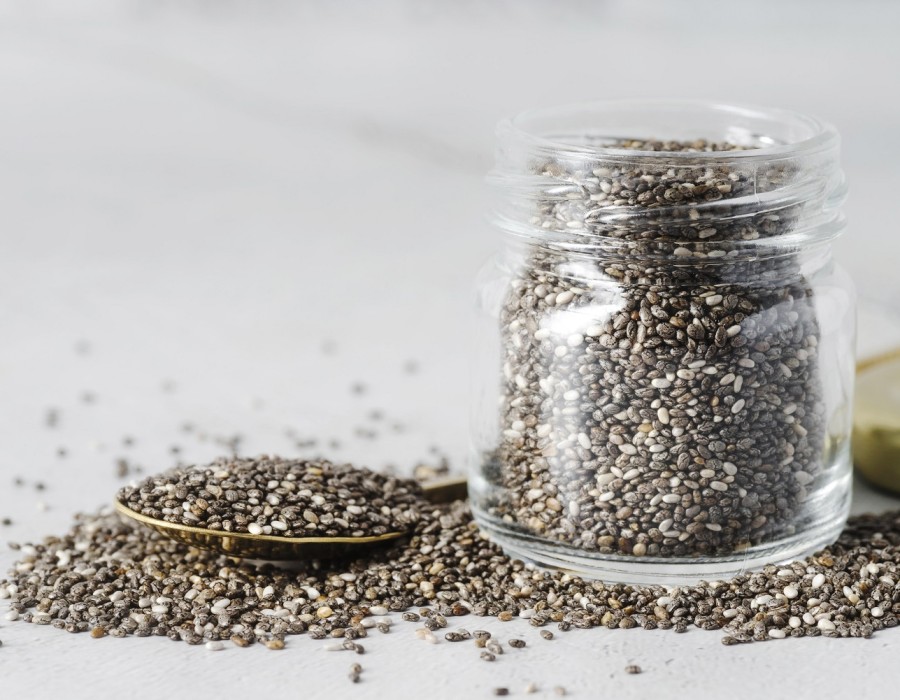Chia seeds have become a popular health food worldwide, prized for their nutritional benefits and versatility. Whether you want to add them to your smoothies, sprinkle them on salads, or make chia pudding, it’s important to ensure you’re buying pure chia seeds — especially when shopping at local markets where quality can vary widely. In this guide, we’ll show you how to identify genuine chia seeds and avoid common pitfalls. This is particularly useful if you’re looking for chia seeds in Pakistan or any local market.
Understanding What Pure Chia Seeds Are
Before diving into how to spot pure chia seeds, it’s helpful to understand what they look like and why purity matters.
What Are Pure Chia Seeds?
Pure chia seeds are tiny, oval-shaped seeds that come mainly in black and white varieties. They have a smooth, shiny surface with a mottled pattern. The seeds are harvested from the Salvia hispanica plant, native to Central and South America.
Pure chia seeds are rich in omega-3 fatty acids, fiber, protein, antioxidants, and essential minerals like calcium and magnesium. These nutrients offer many health benefits, from improved digestion to better heart health.
Why Purity Matters
Impure or adulterated chia seeds can be mixed with other seeds, dirt, or low-quality materials that reduce nutritional value and may even harm your health. Buying pure chia seeds guarantees you get the full benefits of this superfood.
Common Impurities and Adulterants Found in Local Markets
When shopping locally, especially in open or traditional markets, it’s not uncommon to encounter impure or fake chia seeds. Here’s what to watch out for:
- Mixed Seeds: Sometimes chia seeds are mixed with cheaper seeds like basil seeds or flax seeds, which may look similar but have different nutritional profiles.
- Foreign Particles: Dirt, sand, or seed husks mixed in with the product.
- Fake Seeds: Seeds from unrelated plants passed off as chia seeds.
Consuming impure chia seeds can lead to digestive issues and poor nutrition, so vigilance is key.
Visual Inspection Tips
A simple visual check can reveal a lot about the quality of chia seeds.
What to Look For:
- Color: Pure chia seeds are mostly black or white with a slight sheen. Avoid seeds that look dull or have inconsistent coloring.
- Size and Shape: Seeds should be uniform in size, roughly 1 to 2 mm long, and oval-shaped.
- Foreign Matter: Check carefully for any dirt, small stones, or seed husks mixed in.
If the seeds look dusty or contain debris, they are likely low-quality or impure.
Physical Tests to Identify Purity
Beyond just looking, you can do quick tests at home to check if chia seeds are genuine.
1. Water Test
Place a tablespoon of chia seeds in a glass of water and let them soak for about 15-30 minutes. Pure chia seeds absorb water and develop a gel-like coating around them. If the seeds don’t swell or create a gel, they might not be genuine or could be stale.
2. Smell Test
Fresh chia seeds should have a mild, nutty scent. If you notice a strong or rancid odor, the seeds may be old or stored improperly.
3. Touch and Feel
Genuine chia seeds feel dry and firm when you rub them between your fingers. If they feel sticky or moist, they might be contaminated or spoiled.
Packaging and Labeling Clues
If you’re buying packaged chia seeds in local stores or supermarkets, check the following:
- Sealed Packaging: Ensure the bag or container is sealed properly to avoid contamination.
- Expiry Date: Freshness matters; avoid products close to or past their expiry date.
- Brand and Certification: Look for trusted brands with certifications like organic, non-GMO, or quality assurance marks.
- Label Details: Check the origin, nutritional information, and storage instructions.
Proper packaging and clear labeling often indicate better quality.
Price Point and Source Considerations
Price can be a helpful indicator of purity but be careful.
- Typical Price Range: Pure chia seeds usually cost more due to their health benefits and cultivation costs.
- Beware of Cheap Seeds: If the price is too low, it may indicate adulteration or poor quality.
- Source of Seeds: Chia seeds imported from countries like Mexico, Argentina, or Bolivia are often of better quality. In Pakistan, sourcing might vary, so always ask sellers about the origin.
Where to Buy Pure Chia Seeds Locally
Finding reliable sources for pure chia seeds can make all the difference. Here are some tips:
- Health Food Stores: Specialized shops often stock high-quality chia seeds.
- Organic Markets: Organic and natural product stores tend to have better quality control.
- Trusted Sellers: Ask for recommendations or check reviews if buying from local vendors.
- Online Stores: Verified online sellers in Pakistan often provide detailed product descriptions and certifications.
Conclusion
Buying pure chia seeds in local markets can be challenging, but with the right knowledge, you can avoid fake or low-quality seeds. Remember to:
- Inspect the seeds visually for color, size, and cleanliness
- Perform simple home tests like soaking in water and smelling
- Check packaging, expiry dates, and trusted brands
- Be cautious about prices and sources
Choosing pure chia seeds ensures you enjoy their full nutritional benefits and contribute to your health in the best way possible.
FAQ
Q: How long do chia seeds last?
A: When stored in an airtight container in a cool, dry place, chia seeds can last up to two years.
Q: Are white chia seeds less nutritious than black ones?
A: Both white and black chia seeds have similar nutritional profiles and benefits.
Q: Can pure chia seeds be stored at room temperature?
A: Yes, but keep them away from heat and moisture to maintain freshness.





Comments